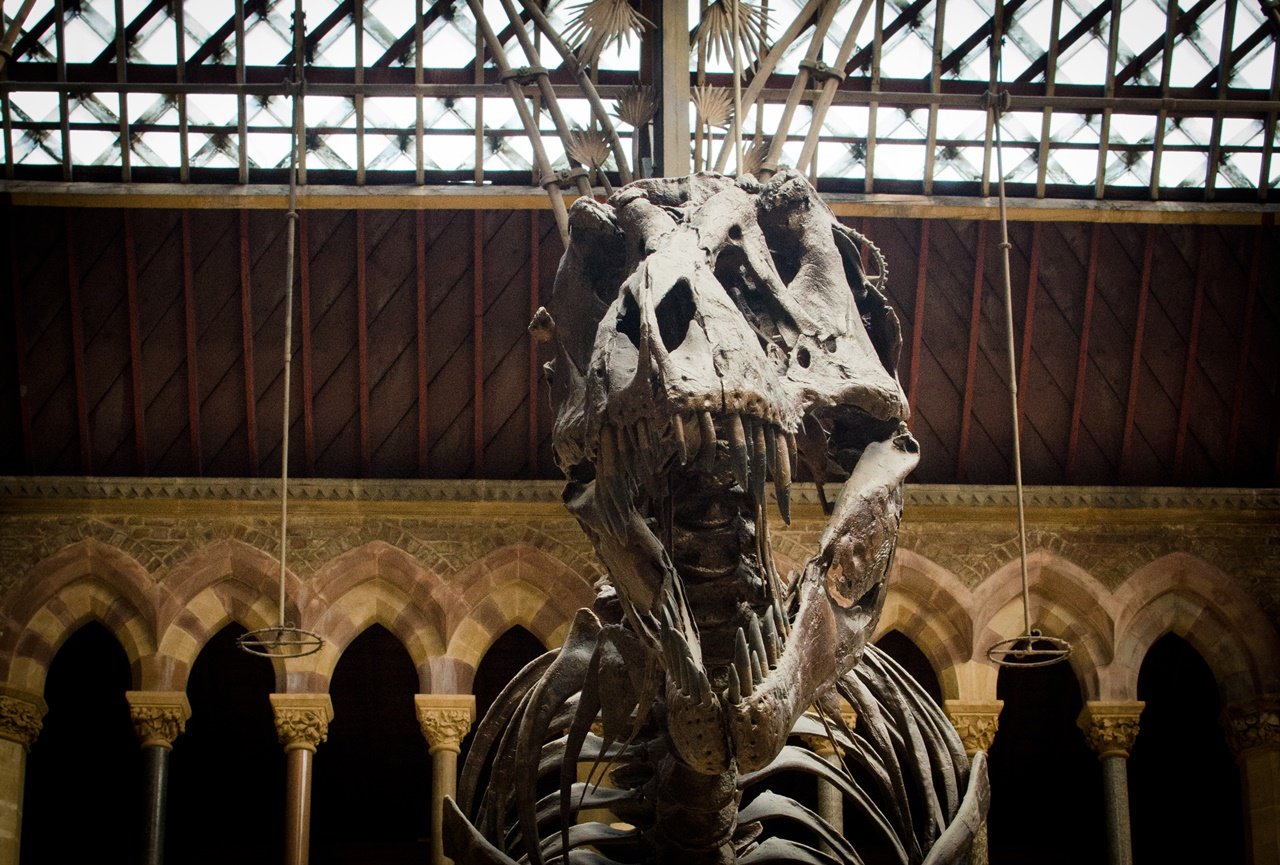
Sunlight is “destroying” some of the collections at Oxford University’s Museum of Natural History, according to an application for a new restoration permit.
The historic museum is housed in an 1860 neo-Gothic building designed by Irish architects Thomas Newenham Deane and Benjamin Woodward. Among its treasures are a Tyrannosaurus Rex skeleton, a 14-foot sperm whale jaw from 1840, and the head of a dodo with intact skin (the only such specimen in the world, boasts the museum).
Ironically, a $2.6-million restoration project has contributed to damage to parts of the museum’s collection. That 14-month overhaul, in 2013–14, saw the roof’s 8,500 glass tiles removed and resealed, according to the BBC.
A degraded UV-protective film was removed in the restoration and not replaced. The museum opted instead to use UV protections on individual display cases, but that left some larger specimens, including whale skeletons, exposed.
In an application to undertake further restoration, architecture firm Purcell says that precious holdings “are being destroyed.” However, a museum spokesman assured artnet News that none of the museum’s exhibits “have thus far suffered any major deterioration.”
The Oxford University Museum of Natural History. Photo courtesy Prabhu B. Doss, via Flickr.
The repairs were undertaken due to leaks, but the collection appears to have left the frying pan for the fire, as it were, as sunlight is streaming through the glass ceiling and causing temperatures to soar above 110 degrees during the summer, the BBC reports.
The museum, which sees annual attendance of about 700,000, has applied to the city council for permission to use solar protection on the roof in order to drastically reduce UV rays; a museum spokesperson was not at liberty to indicate the potential cost.